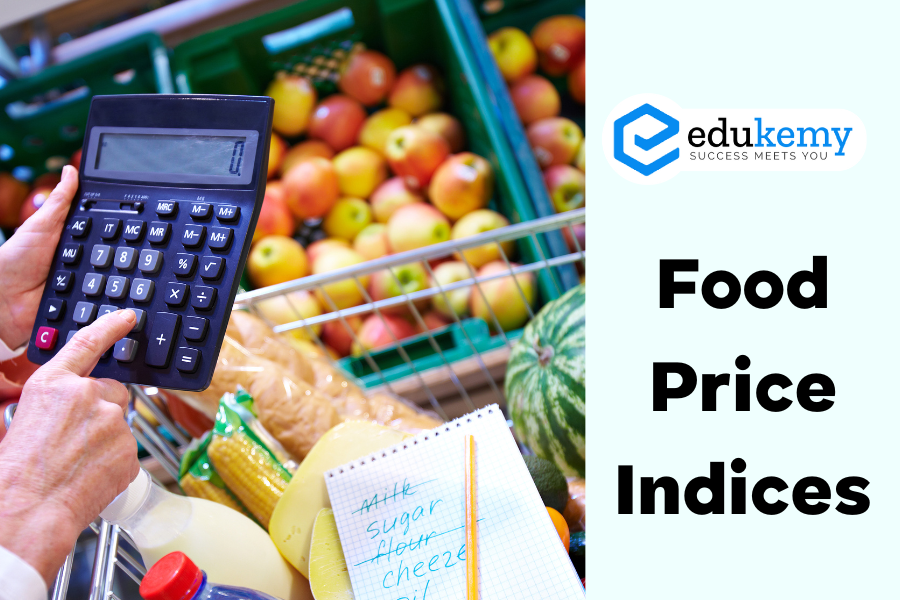
Food Price Indices: In the context of inflation measurement, food price indices play a crucial role. Both the Wholesale Price Index (WPI) and the Consumer Price Index (CPI) have specific indices dedicated to food prices. These indices track the changes in the prices of food items over time, providing insights into the inflationary pressures within the food sector.
- WPI Food Index: This index, part of the Wholesale Price Index, focuses on tracking changes in the prices of food items at the wholesale level, providing insights into inflation trends in the food supply chain.
- CPI Food Price Index: Within the Consumer Price Index, the food price index reflects changes in the retail prices of food items. It is a key component of the overall CPI, contributing to the measurement of consumer inflation.
By monitoring food price indices, policymakers can assess the impact of inflation on essential goods, especially those related to basic sustenance, and make informed decisions to maintain economic stability.
Consumer Food Price Indices (CFPI): The Consumer Food Price Index (CFPI) is released by the Central Statistics Office (CSO) and is a part of the new Consumer Price Index (CPI) series in India. It covers food products consumed by specific population groups in rural, urban, and combined areas. The CFPI provides insights into the changes in prices of food items over time, contributing to the assessment of inflation in the food sector. The base year for CFPI is 2012.
FAO Food Price Index: The Food and Agriculture Organization (FAO) of the United Nations releases the FAO Food Price Index, which is a measure of the monthly changes in international prices of a basket of food commodities. This global index comprises five commodity group price indices (Cereal, Vegetable Oil, Dairy, Meat, and Sugar), weighted based on the average export shares of each group for the base year 2002-2004 (with a value of 100). The FAO Food Price Index is a key indicator for monitoring trends in global food prices.
FAQs
1. What is a Food Price Index (FPI)?
- A Food Price Index (FPI) is a measurement tool used to track and monitor changes in the prices of a basket of food items over time. It serves as an indicator of food inflation or deflation within an economy.
2. How is a Food Price Index calculated?
- FPIs are typically calculated using weighted averages of the prices of various food items, often categorized into groups such as grains, dairy, meat, fruits, and vegetables. The weights assigned to each item reflect its relative importance in household consumption. These prices are then aggregated and compared over time to establish trends.
3. What factors influence fluctuations in Food Price Indices?
- Factors influencing FPI fluctuations include weather conditions affecting agricultural production, supply chain disruptions, changes in demand due to population growth or shifts in consumer preferences, currency fluctuations affecting international trade, government policies such as subsidies or tariffs, and market speculation.
4. Why are Food Price Indices important?
- FPIs provide valuable insights into the affordability and accessibility of food for consumers, the profitability of food production for farmers, and the overall health of the agricultural sector. They also inform policymakers, businesses, and international organizations about potential food security risks and the need for intervention or policy adjustments.
5. How do Food Price Indices impact consumers and businesses?
- High FPIs can lead to increased food costs for consumers, potentially impacting their purchasing power and nutritional well-being. For businesses, particularly those in the food industry, FPI fluctuations can affect production costs, profit margins, and pricing strategies. Additionally, FPIs influence investment decisions in agriculture and food-related industries, as well as government policies related to trade, subsidies, and social assistance programs.
In case you still have your doubts, contact us on 9811333901.
For UPSC Prelims Resources, Click here
For Daily Updates and Study Material:
Join our Telegram Channel – Edukemy for IAS
- 1. Learn through Videos – here
- 2. Be Exam Ready by Practicing Daily MCQs – here
- 3. Daily Newsletter – Get all your Current Affairs Covered – here
- 4. Mains Answer Writing Practice – here

